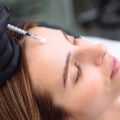Overview of Injectables and Fillers in the UK
In recent years, injectables and dermal fillers have rapidly gained popularity across the United Kingdom, reflecting both advancements in cosmetic technology and evolving cultural attitudes towards aesthetic enhancement. From the vibrant streets of London to the historic towns of Scotland, these non-surgical treatments are no longer reserved for celebrities or the elite; they are widely embraced by people from all walks of life who seek subtle enhancements or restorative solutions. Commonly used products include hyaluronic acid-based fillers such as Juvéderm and Restylane, as well as anti-wrinkle injections like Botox. The British approach to cosmetic procedures is often characterised by a preference for natural-looking results and understated elegance, aligning with the nation’s broader cultural values of modesty and restraint. However, there is also a growing acceptance of individual choice and self-expression, which encourages many to explore personal definitions of beauty. As awareness increases regarding the importance of tailored techniques—especially given the genetic diversity within British ethnic groups—practitioners are adapting their methods to respect unique anatomical structures and aesthetic preferences. This nuanced understanding ensures that injectable treatments in the UK not only enhance appearance but also empower individuals to feel more confident in their own skin.
2. Ethnic Diversity in the United Kingdom
The United Kingdom stands as a vibrant tapestry of cultures, with its population representing a wide range of ethnic backgrounds. This diversity is not only celebrated in daily life but also carries significant implications for aesthetic medicine, particularly when considering injectables and fillers. Understanding the distinctive facial anatomy, skin types, and aesthetic preferences among British ethnic groups is crucial for delivering safe and satisfying results.
Major British Ethnic Groups and Their Unique Features
Across the UK, several major ethnic communities can be identified, each bringing unique anatomical characteristics and beauty ideals. Recognising these differences allows practitioners to move beyond a ‘one-size-fits-all’ approach and tailor their techniques more effectively.
| Ethnic Group | Distinct Facial Anatomy | Typical Skin Types | Aesthetic Ideals |
|---|---|---|---|
| White British | Higher nasal bridges, thinner lips, well-defined jawlines | I-II (Fitzpatrick scale), generally fair skin prone to sun damage | Subtle enhancement, natural contouring, youthful restoration |
| South Asian (Indian, Pakistani, Bangladeshi) | Broader nasal base, fuller cheeks, rounded chin | IV-V (Fitzpatrick scale), olive to brown skin prone to pigmentation | Smooth skin tone, defined jawline, balanced facial proportions |
| Black British (African-Caribbean descent) | Wider nasal base, prominent cheekbones, fuller lips | V-VI (Fitzpatrick scale), deeper tones with lower risk of wrinkles but higher risk of keloids | Even skin texture, enhanced cheekbones, subtle lip definition |
| East Asian (Chinese, Vietnamese) | Flatter mid-face profile, less pronounced brow ridge, smaller nose tip | III-IV (Fitzpatrick scale), yellow undertones with occasional sensitivity | Nose bridge augmentation, defined jawline, natural results emphasising harmony |
| Mixed Heritage/Other Groups | Combination features depending on ancestry | Diverse spectrum from I-VI (Fitzpatrick scale) | Bespoke enhancements respecting individual balance and heritage traits |
The Importance of Cultural Sensitivity in Aesthetic Goals
Cultural context shapes what is considered beautiful or desirable. For example, while some groups may prefer subtle changes that maintain their natural identity, others might seek more pronounced enhancements that align with their community’s trends. Practitioners must be attuned not only to anatomical variations but also to these nuanced expectations.
Towards Personalised Aesthetic Care in Britain
An awareness of the UKs ethnic mosaic empowers clinicians to respect individuality in every consultation. By combining technical expertise with cultural understanding, professionals foster trust and deliver outcomes that truly resonate with each patient’s vision of beauty.
![]()
3. Genetic Variation and Facial Anatomy Considerations
Understanding the genetic diversity across British ethnic groups is essential for achieving natural and harmonious results with injectables and fillers. The United Kingdom is home to a rich blend of heritages, including Caucasian, South Asian, Black African, East Asian, and mixed backgrounds. Each group presents distinctive anatomical features shaped by their unique genetic histories. For example, South Asian patients may have thicker skin and more pronounced malar fat pads, while individuals of Black African descent often possess stronger bone structure with wider zygomatic arches and fuller lips. East Asian clients typically display flatter nasal bridges and shorter vertical facial height. These variations profoundly influence how volume loss manifests with age and which areas benefit most from enhancement or support.
A deep appreciation of these differences goes beyond superficial observation; it informs precise product selection, injection depth, and technique. For instance, enhancing midface volume in a patient with naturally high cheekbones requires a different approach than augmenting definition for someone with softer contours. Similarly, respecting the natural lip proportions and perioral anatomy within each ethnic group prevents overcorrection or an unnatural appearance.
By tailoring techniques to reflect these genetic factors, practitioners honour each client’s individuality while also safeguarding against common pitfalls—such as excessive projection or distortion of features that are characteristic of their heritage. This nuanced approach not only achieves aesthetic goals but also supports clients in feeling confidently themselves within the diverse British landscape.
4. Tailoring Techniques: Culturally Sensitive Approaches
Achieving natural, confidence-boosting results with injectables and fillers requires a deep understanding of both genetic variation and cultural values among British ethnic groups. Customising treatment plans to honour these nuances is not only a mark of professional excellence but also a respectful approach that nurtures patient trust and satisfaction.
Understanding Patient Backgrounds
Before any procedure, practitioners should invest time in learning about their patients genetic traits and cultural preferences. For example, some communities may favour subtle enhancements, while others might appreciate more defined features. Open conversations about expectations, beauty ideals, and previous experiences can help uncover these preferences, setting the stage for a tailored approach that feels right for each individual.
Best Practices for Customisation
| Ethnic Group | Common Genetic Traits | Cultural Considerations | Recommended Approach |
|---|---|---|---|
| South Asian British | Thicker skin, higher melanin levels, rounded facial contours | Preference for natural enhancement, avoidance of over-volumisation | Use conservative filler amounts; focus on contouring rather than volume |
| Black British | Diverse facial shapes, firmer skin texture, pronounced cheekbones | Avoid unnatural sharpness; respect heritage aesthetics | Select flexible fillers; enhance natural structure without exaggeration |
| East Asian British | Smoother mid-face, flatter nasal bridge, delicate bone structure | Subtle refinements prioritised; balanced profile desired | Gentle contouring of nose and chin; avoid excessive augmentation |
| White British | Varied skin thickness, angular bone structure, variable lip fullness | Diverse aesthetic preferences from classic to contemporary looks | Bespoke planning based on individual consultation and trends |
Culturally Attuned Communication Strategies
Cultivating an atmosphere of sensitivity begins with language. Use clear explanations, avoid jargon, and show genuine interest in each patient’s background. Encourage questions about the procedures impact on long-term appearance within their community context. By blending clinical expertise with cultural empathy, practitioners can empower patients to make informed decisions that align with both their identity and aspirations.
Summary: The Power of Personalisation
Customising injectables and fillers with respect to genetic and cultural factors isn’t just about technique—it’s about building lasting relationships rooted in trust. When practitioners put patient individuality at the forefront, they foster confidence and deliver results that truly reflect the diverse beauty found across Britain’s vibrant communities.
5. Patient Communication and Informed Consent
Effective patient communication is the cornerstone of safe and satisfying injectable and filler treatments, especially within the context of Britain’s richly diverse population. Recognising the genetic variations among British ethnic groups means practitioners must approach each consultation with sensitivity, clarity, and a deep respect for individual backgrounds and expectations.
Establishing Trust Through Open Dialogue
Start by creating a welcoming environment where patients feel comfortable expressing their aesthetic goals and concerns. Use culturally aware language and be mindful of any potential language barriers. Listening actively not only builds trust but also helps you understand how cultural identity may shape beauty ideals and treatment preferences.
Setting Realistic Goals
Be transparent about what injectables and fillers can genuinely achieve. Use visual aids or before-and-after images relevant to various British ethnicities to illustrate possible outcomes. This ensures that patients from all backgrounds have a clear understanding of what is achievable, helping to prevent misunderstandings or disappointment later on.
Discussing Potential Risks
It’s vital to explain both common side effects and rare complications, tailoring your discussion to account for specific genetic traits (such as a higher risk of hyperpigmentation in certain skin types). Encourage questions and provide written information in plain English, which can be particularly valuable for those who might not have English as their first language.
Respecting Diverse Expectations
Understand that concepts of beauty vary widely across Britain’s ethnic communities. Some patients may value subtle enhancement; others might seek more noticeable results. Always respect personal preferences without imposing standardised ideals. Make it clear that their values will guide your recommendations.
Documenting Informed Consent
Ensure every patient gives informed consent after a thorough discussion tailored to their background. Document the conversation carefully, noting how expectations were managed and risks explained. This not only protects both parties legally but reinforces a culture of ethical, patient-centred care that reflects the best of British clinical standards.
6. Case Studies and Practical Applications
When it comes to injectables and fillers, real-world examples from UK clinics powerfully illustrate the importance of adapting techniques to the genetic diversity found within British ethnic groups. Let’s explore several case studies that demonstrate how tailored approaches can yield outstanding, natural-looking results for patients of various backgrounds.
Enhancing Harmony in Afro-Caribbean Profiles
A Harley Street clinic recently treated a British woman of Afro-Caribbean descent seeking subtle mid-face rejuvenation. The practitioner used hyaluronic acid-based fillers with a technique mindful of her naturally higher cheekbones and denser skin structure. Rather than simply volumising, the expert focused on restoring gentle contours while respecting her unique facial anatomy. The result was a refreshed appearance that maintained her cultural features—a clear example of culturally sensitive aesthetics in action.
Subtle Refinement for South Asian Features
In Birmingham, a clinic specialising in multicultural beauty worked with a young British-Indian man who wished to address tear trough hollowness without altering his distinct eye shape or soft tissue characteristics. By selecting a lightweight filler and placing it at a conservative depth, the practitioner achieved brightness under the eyes while preserving his natural periorbital structure. This patient-centred approach fostered trust and ensured outcomes were both effective and respectful of his heritage.
Restoring Definition for East Asian Jawlines
A London-based aesthetician provided dermal filler jawline contouring for a British-Chinese woman. Aware of the tendency for flatter mandibular angles among East Asian populations, the clinician selected a firmer product and used microbolus injections along the jawline to enhance definition subtly. The patient was delighted—her lower face appeared more sculpted, yet her overall facial harmony and ethnicity remained perfectly intact.
Practical Lessons for Practitioners
These UK case studies highlight that success hinges on more than technical skill; it requires active listening, cultural awareness, and an understanding of anatomical nuances across ethnicities. Practitioners who take the time to tailor their methods—be it through choice of product, injection depth, or placement—build stronger rapport with clients and deliver results that celebrate individual identity. British clinics leading this personalised approach are setting new standards for inclusivity in aesthetics.
Encouraging Diversity Through Personalised Care
The positive outcomes seen across these examples reinforce the value of bespoke injectable treatments in Britain’s multicultural society. By recognising and respecting genetic variation, practitioners not only achieve superior results but also empower individuals from all backgrounds to feel confident in their own skin—truly reflecting the vibrant diversity that defines modern British beauty.
7. Training, Regulation, and Ongoing Professional Development
Delivering injectable treatments and dermal fillers that respect the genetic diversity found within British ethnic groups requires far more than technical skill alone. Professional training is the bedrock of safe and effective practice, especially when practitioners are expected to adapt techniques for a wide range of skin tones, facial structures, and cultural considerations. In the UK, regulations surrounding injectables have become increasingly robust in recent years. It is mandatory for practitioners to be appropriately qualified and registered with relevant regulatory bodies, such as the General Medical Council (GMC), Nursing and Midwifery Council (NMC), or the General Dental Council (GDC). Additionally, non-medical practitioners must adhere to strict guidelines set out by the Joint Council for Cosmetic Practitioners (JCCP) and other oversight organisations.
However, regulation alone does not guarantee best practice.
The Need for Specialised Education in Diversity
As Britain’s population becomes ever more multicultural, it is essential that aesthetic practitioners pursue ongoing professional development specifically focused on treating diverse ethnic groups. Continuing education courses covering topics like pigmentation differences, anatomical variations among different backgrounds, and the importance of cultural sensitivity ensure clinicians can provide truly personalised care. Moreover, knowledge-sharing through conferences, peer-reviewed journals, and collaborative workshops keeps practitioners up-to-date with evolving standards and emerging research.
Ethical Practice and Building Trust
Patients from all communities deserve both safety and respect. By embracing a culture of continuous learning—rooted in empathy and scientific rigour—clinicians foster trust across the UK’s varied populations. This commitment helps dispel myths, reduces risk of complications, and ultimately elevates outcomes for every patient.
A Commitment to Excellence
In summary, those offering injectables and fillers in Britain must not only comply with regulatory requirements but also actively seek knowledge about genetic variation. The pursuit of excellence demands humility: understanding that each patient brings their own heritage and aspirations into the clinic. Through dedicated training and a willingness to evolve professionally, practitioners can confidently deliver results that celebrate Britain’s beautiful diversity.


